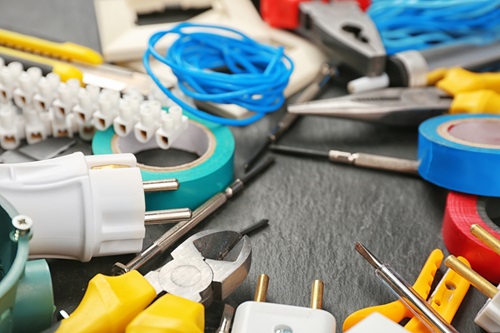
Power cords and plugs are essential components found in most household appliances and electronics. Whether it’s your computer or electric stove, these elements share common traits when it comes to repair. Here are some tips from a professional electrician that you need to be familiar with.
Knowing how to mend a broken power cord or plug can save you from frustrating situations. If you’re unsure about handling these issues, here are some practical tips to assist you in addressing power cord and plug problems.
Electrician Tips: Power Cord and Plug Problems
Identify the Source of Problems
Regularly inspect all your appliance cords for signs of wear and tear. Sometimes, the issues may not be visible, so it’s crucial to dedicate time each month to check each power cord. To confirm if a cord is faulty, use a continuity tester. This device can determine if a cord or plug is working efficiently. When a cord is faulty, the tester will indicate it by lighting up or buzzing.
If the tester signals an issue, remove the plug and test all the points on the cord. If the tester consistently lights up or buzzes along the cord’s test points, the problem likely lies in the plug. Once you’ve pinpointed the source of the electrical problem, replace that specific part before attempting to use the appliance.
To replace a power cord, start by removing the worn-out one. Some appliances allow for easy cord removal by taking off the cover from a connection box. For others, you may need to partially disassemble the appliance to access the terminals and detach the cord. Typically, a clamp or strain-relief device secures the cord in place.
Loosen the clamp or remove the strain-relief device to safely remove the cord. When installing the new cord, don’t forget to reattach the strain-relief device or tighten the clamp. Mishandling these components can lead to damage, so replace them if necessary before using the appliance.
Creating New Connections
Certain appliances have conductor ends that loop around terminal wires. When making new connections, carefully strip about 2 inches of the cord’s outer insulation. Strip about half an inch of the insulation from the end of each conductor wire. Twist the wire filaments that are exposed into solid prongs. Loosen each terminal screw and loop each twisted wire filament around its respective screw. Once completed, tighten the screws firmly.
Fixing Faulty Plugs
When the issue resides within the plugs, you can simply remove and replace them with new ones. To replace a worn-out plug, you’ll typically need to open and disassemble it. There are two types of plugs found in appliances: male plugs and female plugs. Male plugs have two blades or two blades and a grounding prong and are designed to fit into electric outlets. Female plugs have terminal holes rather than blades and are often used at the appliance end of the cord. Female plugs may be held together by either rivets or screws. While screw-held plugs can be taken apart and repaired, those held together by rivets cannot.
Replacing Plugs
Before replacing the plugs, open them and check whether the conductor wires are correctly attached to the plug’s screw terminals. Loose or improperly connected wires can cause plug failures. If this doesn’t resolve the issue, proceed with plug replacement.
Attaching a New Male Plug
After removing the faulty male plug, insert the cord through the plug opening, pushing it in until about five to six inches of cord are inside. Strip about 2 inches of the cord’s outer insulation and use a wire stripper to get rid about half an inch of the outer insulation from each conductor wire. Twist the exposed filaments into solid prongs and loop them around the screw terminals before tightening the screws. If the screws have different colors, match them with the colors of the exposed wires.
Once the wires are securely fastened to the terminal screws, you should slide down the cardboard insulator over the plug blades. If there’s a clamp-type sleeve, ensure it’s firmly secured around the cord. If you’re uncertain about any of these steps, don’t hesitate to contact a residential electrician.
If you find these cord and plug repair tasks intimidating, consider reaching out to your local electrician in Myrtle Beach. Periodic inspections of your home’s electrical system can prevent potential disasters.
Ready to Ensure Your Home’s Electrical Safety?
Don’t wait until problems arise—prioritize your home’s electrical safety.
For professional assistance, reach out to MB Electrician Pros today. Your safety and peace of mind are worth the investment.
Like our Facebook page for more info about our services.
MB Electrician Pros
Myrtle Beach, SC 29577
843-353-6345
electriciansmyrtlebeach.com

No comments:
Post a Comment